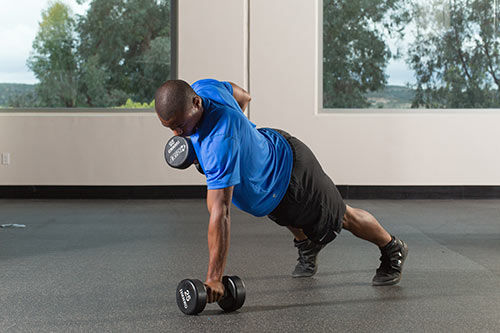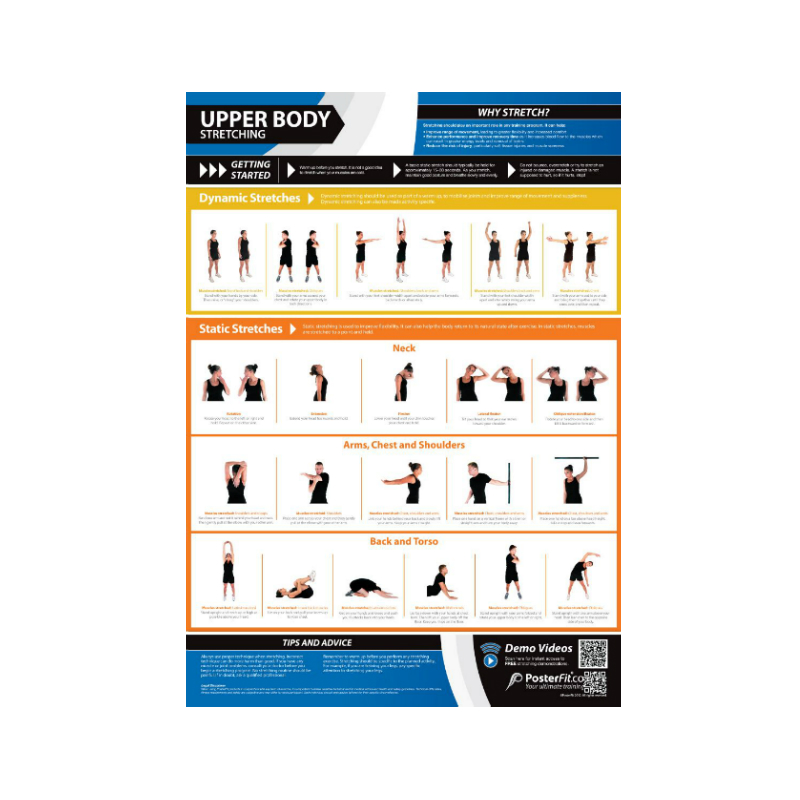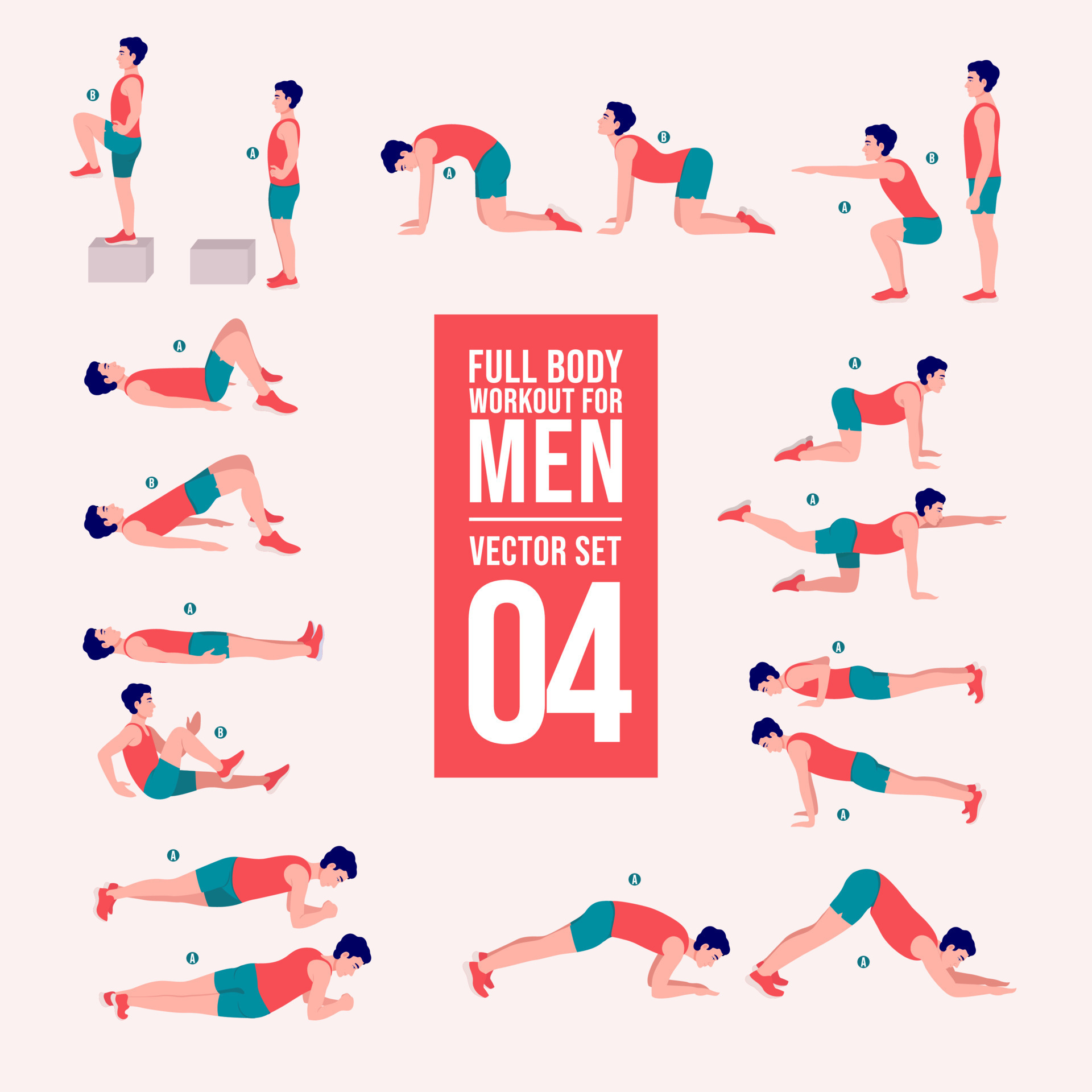Impact-Free Full Body Routine for Strength Building

Impact-Free Full Body Routine for Strength Building
Introduction: Rethinking Your Workout
In a fitness landscape dominated by high-intensity workouts, it’s essential to recognize the value of low-impact alternatives. If you’re seeking a full body workout without jumping, you’re in the right place. Let’s explore how you can build strength and endurance without subjecting your joints to unnecessary stress.
Understanding Low-Impact Exercise: What Does It Mean?
Low-impact exercises are those that minimize stress on your joints while still providing a challenging workout. These exercises are gentler on the body, making them suitable for individuals with joint issues, mobility limitations, or those simply looking for a more sustainable approach to fitness. By eliminating jumping movements, you can still achieve an effective full body workout without risking injury.
Designing Your Impact-Free Routine: The Essentials
When crafting an impact-free full body workout, focus on exercises that engage multiple muscle groups while minimizing joint impact. Incorporate movements such as squats, lunges, step-ups, and planks, which strengthen muscles and improve stability without requiring you to leave the ground. Additionally, consider incorporating resistance training with weights or resistance bands to further challenge your muscles.
Building Strength without Jumping: The Benefits
Opting for a full body workout without jumping offers several benefits beyond joint preservation. By focusing on controlled, deliberate movements, you improve muscular endurance, balance, and coordination. Plus, the lower intensity nature of these exercises allows for longer workout durations, enabling you to burn calories and build strength effectively.
Effective Exercises: What to Include
In your impact-free full body routine, include a variety of exercises that target different muscle groups. Start with compound movements like squats and deadlifts to engage multiple muscles simultaneously. Then, incorporate isolation exercises such as bicep curls and tricep extensions to target specific muscle groups. Don’t forget about core exercises like planks and Russian twists to strengthen your midsection.
Tips for Intensifying Your Workout: Adding Resistance
While low-impact exercises are inherently less stressful on the joints, you can still increase the intensity of your workout by adding resistance. Incorporate weights, resistance bands, or even your body weight to challenge your muscles and elevate your heart rate. Experiment with different resistance levels and rep ranges to find what works best for you.
Adapting Your Routine: Listen to Your Body
As with any workout regimen, it’s essential to listen to your body and make adjustments as needed. If you experience discomfort or pain during any exercise, modify the movement or try a different variation that feels better for your body. Remember, the goal is to challenge yourself without causing injury or undue strain.
Balancing Intensity and Recovery: Prioritize Rest
While consistency is key to progress, so is rest and recovery. Allow your muscles time to repair and grow stronger by incorporating rest days into your routine. Use this time to focus on mobility work, stretching, or low-impact activities like swimming or cycling to keep your body moving without overexerting yourself.
Staying Consistent: The Key to Success
Ultimately, the key to success with an impact-free full
Stretching for Strength Full Lower Body Flexibility Routine

Unlocking the Benefits of Full Lower Body Stretching
The Importance of Lower Body Flexibility
Flexibility is often overlooked in fitness routines, but it’s essential for overall health and well-being, especially in the lower body. Stretching the muscles and joints in your legs can improve range of motion, reduce stiffness, and prevent injury. Incorporating a full lower body stretching routine into your fitness regimen can help you move more freely and perform daily activities with ease.
Preventing Injury and Improving Performance
Stretching the muscles in your lower body helps prevent injury by increasing flexibility and reducing muscle tension. When your muscles are more flexible, they’re less likely to strain or tear during physical activity. Additionally, improved flexibility can enhance athletic performance by allowing you to move more efficiently and with greater ease. Whether you’re a professional athlete or a casual gym-goer, a full lower body stretching routine can help you stay injury-free and perform at your best.
Relieving Muscle Tension and Soreness
After a tough workout or a long day of sitting at a desk, your lower body muscles can become tight and tense. Stretching helps alleviate muscle tension by increasing blood flow to the muscles and promoting relaxation. It also helps reduce post-exercise soreness by flushing out lactic acid and other waste products that accumulate during intense exercise. Incorporating a full lower body stretching routine into your recovery routine can help soothe sore muscles and speed up the recovery process.
Improving Posture and Balance
Tight muscles in the lower body can contribute to poor posture and balance issues. Stretching helps lengthen tight muscles and improve joint mobility, which can help correct imbalances and align the body properly. By stretching the muscles in your legs, hips, and lower back, you can improve your posture and reduce the risk of falls and injuries. Whether you’re standing, sitting, or moving, good posture and balance are essential for overall health and well-being.
Enhancing Circulation and Range of Motion
Stretching improves circulation by increasing blood flow to the muscles and joints, which delivers oxygen and nutrients and removes waste products more efficiently. This helps keep your muscles and joints healthy and functioning optimally. Stretching also improves range of motion by lengthening tight muscles and improving joint flexibility. Whether you’re reaching for something on a high shelf or bending down to tie your shoes, having good range of motion in your lower body is essential for everyday activities.
Incorporating Full Lower Body Stretching into Your Routine
Incorporating a full lower body stretching routine into your fitness regimen is easy and convenient. You can do it at home, at the gym, or even at the office. Aim to stretch all the major muscle groups in your lower body, including the quadriceps, hamstrings, calves, hips, and lower back. Hold each stretch for 15-30 seconds and repeat 2-3 times on each side. Remember to breathe deeply and relax into each stretch, and never push yourself to the point of pain.
Choosing the Right Stretches
There are many different stretches
Complete Conditioning Total Body Workout Essentials
Introduction
In today’s fast-paced world, staying fit and healthy is more important than ever. With hectic schedules and endless responsibilities, finding time for exercise can seem like an impossible task. However, incorporating a general body workout into your routine can make a world of difference in your overall health and well-being. Let’s delve into the benefits and essentials of a comprehensive body workout regimen.
Benefits of a General Body Workout
A general body workout offers a plethora of benefits that extend beyond just physical fitness. From boosting mood to enhancing cognitive function, the advantages are endless. Engaging in regular exercise helps release endorphins, often referred to as the body’s natural mood elevators, leaving you feeling happier and more energized.
Improved Strength and Muscle Tone
One of the primary benefits of a general body workout is improved strength and muscle tone. By targeting multiple muscle groups simultaneously, you can effectively build strength and increase muscle mass. Whether you’re lifting weights, performing bodyweight exercises, or using resistance bands, incorporating strength training into your routine is essential for overall fitness.
Enhanced Flexibility and Mobility
Flexibility and mobility are often overlooked aspects of fitness, but they are equally important for overall well-being. A general body workout that includes dynamic stretching and mobility exercises can help improve flexibility, range of motion, and joint health. Enhanced flexibility not only reduces the risk of injury but also improves posture and athletic performance.
Increased Cardiovascular Health
Cardiovascular exercise is crucial for maintaining a healthy heart and reducing the risk of cardiovascular disease. Incorporating activities such as running, cycling, or swimming into your general body workout routine can help improve heart health, increase stamina, and boost endurance. Aim for at least 150 minutes of moderate-intensity cardio each week for optimal results.
Weight Management and Fat Loss
In addition to building strength and improving cardiovascular health, a general body workout can also aid in weight management and fat loss. Combining strength training with cardiovascular exercise helps burn calories and build lean muscle mass, resulting in a more toned and sculpted physique. Pair your workouts with a balanced diet for maximum effectiveness.
Stress Reduction and Mental Well-being
Exercise is not only beneficial for the body but also for the mind. Engaging in regular physical activity helps reduce stress levels, alleviate anxiety, and improve overall mental well-being. Whether it’s a brisk walk in nature, a yoga session, or a high-intensity workout, finding an activity that you enjoy can help clear your mind and boost your mood.
Variety and Versatility in Workouts
One of the key aspects of a general body workout is variety and versatility. Mixing up your routine with different exercises, equipment, and workout styles not only keeps things interesting but also prevents boredom and plateaus. Experiment with different modalities such as HIIT, circuit training, or functional fitness to challenge your body in new ways.
Tips for a Successful General Body Workout
To make the most of your general body workout, it’s essential to approach it with the right mindset and
Elevate Your Fitness Complete Over Exercise Routine

Unlocking the Power of Full-Body Exercise
Ignite Your Fitness Journey
Embarking on a fitness journey requires dedication and determination. It’s not just about hitting the gym sporadically; it’s about committing to a lifestyle that prioritizes health and well-being. Full-body exercise serves as the cornerstone of this journey, offering a comprehensive approach to fitness that targets multiple muscle groups and yields transformative results.
Understanding the Benefits
The benefits of full-body exercise extend far beyond physical appearance. While it certainly helps sculpt and tone muscles, it also enhances overall strength, flexibility, and endurance. Engaging in exercises that involve the entire body promotes functional fitness, improving daily performance and reducing the risk of injury. Moreover, full-body workouts boost metabolism, aid in weight management, and contribute to overall cardiovascular health.
Maximizing Efficiency
In today’s fast-paced world, efficiency is key. Full-body exercises offer a time-saving solution for those with busy schedules. By incorporating compound movements that engage multiple muscle groups simultaneously, you can achieve maximum results in minimal time. This efficiency is particularly appealing for individuals juggling work, family, and other commitments, making it easier to prioritize fitness without sacrificing other aspects of life.
Embracing Variety
Variety is the spice of life, and it’s also essential for maintaining motivation and preventing workout boredom. Full-body exercise provides ample opportunity to mix things up and keep your routine fresh and exciting. From strength training and cardio intervals to functional movements and bodyweight exercises, there’s no shortage of options to choose from. Experimenting with different exercises and workout formats not only keeps things interesting but also challenges your body in new ways, leading to continued progress and growth.
Balancing Intensity
Intensity is a crucial component of any effective workout routine, but finding the right balance is key. Full-body exercises offer versatility in terms of intensity, allowing you to tailor your workouts to your fitness level and goals. Whether you’re a beginner looking to ease into exercise or an experienced athlete pushing your limits, there are endless possibilities for adjusting intensity levels. By listening to your body and paying attention to cues such as heart rate, fatigue, and form, you can find the sweet spot that maximizes results while minimizing the risk of burnout or injury.
Prioritizing Recovery
In the pursuit of fitness goals, it’s easy to overlook the importance of rest and recovery. However, recovery is an essential aspect of any well-rounded training program, especially when it comes to full-body exercise. Giving your muscles time to repair and rebuild is crucial for growth and adaptation. Incorporating rest days into your routine, practicing active recovery techniques such as stretching and foam rolling, and prioritizing quality sleep are all essential components of a balanced approach to fitness.
Setting Realistic Goals
Setting realistic goals is essential for long-term success in any fitness endeavor. Whether you’re aiming to lose weight, build muscle, or improve overall health, establishing clear, achievable objectives will keep you focused and motivated. With full-body exercise, it’s important to set both short-term and long-term goals that align with your
Reach Your Potential Comprehensive Upper Body Stretch

Exploring the Benefits of Full Upper Body Stretch
Introduction
Welcome to a journey into the world of full upper body stretching. It’s not just about touching your toes; it’s about unlocking the potential of your muscles, enhancing flexibility, and promoting overall well-being. In this article, we’ll delve into the importance of full upper body stretching and how it can transform your fitness routine.
Understanding Full Upper Body Stretch
Full upper body stretching involves targeting all major muscle groups in the upper body, including the chest, back, shoulders, arms, and neck. It goes beyond simple static stretches to encompass dynamic movements that engage and elongate muscles, improve joint mobility, and alleviate tension.
The Benefits of Full Upper Body Stretch
The benefits of incorporating full upper body stretching into your routine are manifold. Firstly, it improves flexibility, allowing for greater range of motion in daily activities and workouts. Secondly, it helps to prevent injuries by reducing muscle stiffness and enhancing muscle elasticity. Thirdly, it promotes relaxation and reduces stress by releasing built-up tension in the muscles.
Key Components of Full Upper Body Stretch
A comprehensive full upper body stretch routine should include a variety of stretches that target different muscle groups and movement patterns. This includes stretches for the chest, shoulders, back, arms, and neck, as well as stretches that engage the core muscles. Incorporating both static and dynamic stretches ensures a well-rounded approach to flexibility training.
Effective Stretches for Full Upper Body
Some effective stretches for the full upper body include shoulder rolls, arm circles, chest openers, triceps stretches, and neck stretches. These stretches can be performed either standing, sitting, or lying down, and can be modified to suit individual flexibility levels. Holding each stretch for 15-30 seconds allows the muscles to relax and lengthen gradually.
Maximizing Results with Proper Form
Proper form is essential when performing full upper body stretches to maximize results and minimize the risk of injury. Focus on maintaining a neutral spine, relaxing the muscles being stretched, and breathing deeply throughout each stretch. Avoid bouncing or forcing the stretch beyond your comfortable range of motion, as this can cause muscle strain.
Incorporating Full Upper Body Stretch into Your Routine
Whether you’re a beginner or seasoned athlete, incorporating full upper body stretching into your routine is essential for overall health and well-being. Aim to perform these stretches at least 2-3 times per week, either as a standalone session or as part of your warm-up or cool-down routine. Consistency is key to reaping the benefits of flexibility training.
Tips for Success
To get the most out of your full upper body stretching routine, it’s important to listen to your body and respect its limitations. Start slowly and gradually increase the intensity and duration of your stretches as your flexibility improves. Stay hydrated, eat a balanced diet, and get plenty of rest to support muscle recovery and growth.
Conclusion
In conclusion, full upper body stretching is a valuable component of any fitness routine, offering numerous benefits for flexibility, injury prevention,
Ultimate Bodyweight Blast Intense Moves for Total Fitness
:max_bytes(150000):strip_icc()/3-SquatOverheadPress-56fac9d75f9b58298673683c.jpg)
Introduction
Embarking on a journey toward full-body fitness is a commitment that yields immense rewards. It’s not just about looking good; it’s about feeling strong, agile, and capable in every aspect of life. In this article, we’ll delve into a variety of dynamic full-body workout moves designed to ignite your metabolism, sculpt lean muscle, and boost overall strength and endurance. From high-intensity circuits to bodyweight blasts, we’ve curated a collection of exercises that will push your limits and take your fitness to new heights.
Unleash the Power of Dynamic Circuits
Dynamic full-body circuits are the cornerstone of an effective workout routine. These circuits combine strength training, cardiovascular exercises, and flexibility movements into one seamless sequence, maximizing calorie burn and muscle engagement. Incorporating exercises like squats, lunges, push-ups, and burpees into circuit training sessions provides a comprehensive workout that targets multiple muscle groups simultaneously. The continuous flow of movement keeps your heart rate elevated, torching calories and improving cardiovascular health while building lean muscle mass.
Mastering the Art of Bodyweight Blasts
Bodyweight exercises are a versatile and effective way to sculpt and strengthen your entire body without the need for equipment. From classic moves like push-ups and planks to more dynamic variations such as mountain climbers and jump squats, bodyweight blasts offer endless possibilities for challenging workouts. These exercises leverage your body’s own resistance to build strength and endurance, making them perfect for at-home workouts or when you’re short on time. Plus, they can be easily modified to suit your fitness level, allowing beginners and advanced athletes alike to reap the benefits.
Ignite Your Metabolism with High-Intensity Intervals
High-intensity interval training (HIIT) is a game-changer for those looking to maximize calorie burn and improve overall fitness levels. By alternating between short bursts of intense exercise and brief recovery periods, HIIT workouts push your body to its limits, revving up your metabolism and burning fat long after the workout is over. Incorporating full-body movements like squat jumps, burpees, and kettlebell swings into HIIT sessions ensures that every muscle is engaged, resulting in a total-body transformation. Whether you’re a seasoned athlete or just starting out, HIIT workouts offer a challenging yet rewarding way to push past plateaus and achieve your fitness goals.
Sculpt and Define with Total Body Toning
For those looking to sculpt and define their physique, total body toning workouts are the way to go. These workouts focus on building lean muscle mass while simultaneously toning and tightening trouble spots. By incorporating a mix of strength training exercises targeting different muscle groups, such as bicep curls, tricep dips, and shoulder presses, total body toning workouts create a balanced and symmetrical physique. Adding in compound movements like deadlifts and kettlebell swings further amps up the calorie burn and increases overall strength and power. Whether you’re aiming for sculpted arms, chiseled abs, or defined legs, total body toning workouts are the key to unlocking your body’s full potential.
Challenge Yourself with Full Body Strength Surges
Building strength is essential for achieving optimal health
Maximize Your Fitness Effective Full-Body Workouts
Achieving Total Fitness: The Power of Good All-Body Workouts
Understanding the Basics: What Are All-Body Workouts?
All-body workouts, also known as full-body workouts, are comprehensive training routines that target multiple muscle groups in a single session. Unlike split routines that focus on specific body parts each day, all-body workouts aim to provide a balanced approach to fitness by engaging the entire body in one session.
The Benefits of All-Body Workouts
One of the primary benefits of all-body workouts is their efficiency. By targeting multiple muscle groups simultaneously, these routines allow individuals to maximize their time in the gym and achieve a comprehensive workout in a shorter period. Additionally, full-body workouts promote functional strength, endurance, and overall athleticism, making them suitable for individuals of all fitness levels.
Building Strength and Muscle Mass
All-body workouts are highly effective for building strength and muscle mass. Compound exercises such as squats, deadlifts, bench presses, and pull-ups engage multiple muscle groups simultaneously, resulting in greater muscle activation and growth. Incorporating these exercises into your routine can help you develop a well-rounded physique and achieve noticeable gains in strength and size.
Improving Functional Fitness
Functional fitness refers to the ability to perform daily activities with ease and efficiency. All-body workouts emphasize movements that mimic real-life actions, such as lifting, pushing, pulling, and squatting. By incorporating functional exercises into your routine, you can improve your overall strength, mobility, and coordination, enhancing your ability to perform everyday tasks and reducing the risk of injury.
Enhancing Cardiovascular Health
In addition to building strength and muscle mass, all-body workouts offer cardiovascular benefits as well. Many full-body exercises, such as burpees, mountain climbers, and jumping jacks, elevate the heart rate and increase cardiovascular endurance. By incorporating these dynamic movements into your routine, you can improve heart health, burn calories, and boost overall fitness levels.
Maximizing Efficiency and Time Management
One of the key advantages of all-body workouts is their efficiency. Instead of spending hours in the gym targeting individual muscle groups, individuals can achieve a comprehensive workout in a fraction of the time with full-body routines. This time-saving approach is ideal for busy professionals, parents, and anyone with a hectic schedule looking to prioritize their fitness goals.
Designing Your All-Body Workout Routine
When designing an all-body workout routine, it’s essential to incorporate a variety of exercises that target different muscle groups. Start with compound movements such as squats, deadlifts, and bench presses to engage multiple muscles simultaneously. Then, incorporate isolation exercises to target specific areas of the body, such as bicep curls, tricep extensions, and calf raises.
Balancing Intensity and Volume
Finding the right balance of intensity and volume is key to maximizing the effectiveness of your all-body workout routine. Focus on performing each exercise with proper form and technique, gradually increasing the weight and intensity as your strength and fitness levels improve. Aim for a combination of compound and isolation exercises, adjusting the number of sets and repetitions based on your goals and fitness level.
Listening to Your Body
Finally,
Master the Full Split A Guide to Flexibility and Strength
:max_bytes(150000):strip_icc()/full-split-700-2195448220364be3948ed0a91cdbee6d.jpg)
Master the Full Split: A Guide to Flexibility and Strength
Introduction: Unlocking the Full Split
In the realm of fitness, flexibility is often overshadowed by strength and endurance. However, mastering the full split is a testament to both flexibility and strength. It’s not just about showcasing impressive flexibility; it’s about achieving balance, control, and harmony within your body. In this guide, we’ll explore the benefits of mastering the full split and provide tips for incorporating it into your fitness routine.
The Benefits of Flexibility: Beyond Stretching
Flexibility is more than just being able to touch your toes or perform a split. It’s about improving joint mobility, reducing the risk of injury, and enhancing overall performance in various physical activities. By incorporating full split exercises into your routine, you’ll not only increase your range of motion but also experience improved posture, better balance, and enhanced athletic performance.
Strengthening Muscles: The Key to Success
Contrary to popular belief, achieving the full split requires more than just flexibility – it also requires strength. As you lower yourself into the split position, you engage various muscle groups, including the hamstrings, quadriceps, hip flexors, and glutes. Through consistent practice, you’ll not only increase your flexibility but also build strength and stability in these key muscle groups, further enhancing your performance and reducing the risk of injury.
Mind Over Matter: The Mental Aspect of Flexibility
Flexibility is not just a physical attribute; it’s also a mental one. Mastering the full split requires focus, patience, and perseverance. It’s about pushing past your comfort zone, embracing discomfort, and trusting in your body’s ability to adapt and progress. By cultivating a positive mindset and approaching each practice session with determination and dedication, you’ll overcome mental barriers and unlock new levels of flexibility.
Progressive Overload: Gradual Improvement is Key
Like any skill, mastering the full split takes time, consistency, and patience. It’s important to approach your training with a progressive mindset, gradually increasing the depth and intensity of your stretches over time. By incorporating progressive overload principles into your routine – such as holding stretches for longer durations, increasing the frequency of training sessions, or incorporating resistance training – you’ll continually challenge your muscles and accelerate your progress towards the full split.
Proper Technique: The Foundation of Success
Achieving the full split requires proper technique and form. It’s essential to warm up your muscles thoroughly before attempting any stretches and to listen to your body’s cues throughout the process. Focus on maintaining proper alignment, engaging the appropriate muscle groups, and breathing deeply to relax into the stretch. Avoid forcing your body into positions it’s not ready for, as this can lead to injury and setbacks.
Incorporating Full Split Exercises: A Holistic Approach
To master the full split, it’s essential to incorporate a variety of stretching exercises and techniques into your routine. Dynamic stretches, such as leg swings and lunges, help warm up the muscles and prepare them for deeper stretches. Static stretches, such as the seated hamstring stretch and pigeon
Delicate Strength Gentle Full Body Training Routine
Introduction
In a world where high-intensity workouts seem to dominate the fitness scene, there’s a quieter, gentler approach that’s gaining traction: gentle full-body workouts. These routines offer a refreshing alternative, focusing on relaxation, mindfulness, and nurturing the body rather than pushing it to its limits. Let’s explore the benefits and principles of gentle full-body workouts.
Embracing Tranquility: The Essence of Gentle Full-Body Workouts
At the heart of gentle full-body workouts lies the concept of tranquility. Instead of aiming for sweat-soaked exhaustion, these workouts prioritize peace of mind and a sense of inner calm. They encourage participants to listen to their bodies, move with intention, and cultivate mindfulness throughout each movement.
Soft Strength: Building Muscle with Gentleness
Contrary to popular belief, gentle workouts can still build strength effectively. Through controlled movements and gentle resistance, participants can engage their muscles without putting undue strain on their joints or risking injury. This approach allows for gradual progress and long-term sustainability.
Mindful Movement: The Importance of Presence
One of the key principles of gentle full-body workouts is mindfulness. Participants are encouraged to be fully present in the moment, paying attention to their breath, posture, and sensations within the body. This heightened awareness not only enhances the effectiveness of the workout but also promotes stress reduction and mental clarity.
Flexibility and Fluidity: Embracing the Body’s Natural Range of Motion
Gentle full-body workouts place a strong emphasis on flexibility and fluidity of movement. Rather than forcing the body into rigid positions, participants are encouraged to explore their natural range of motion and move in ways that feel comfortable and nourishing. This approach promotes joint health, mobility, and overall well-being.
Holistic Wellness: Nurturing Body, Mind, and Spirit
Unlike traditional workouts that often focus solely on physical fitness, gentle full-body workouts take a more holistic approach to wellness. They recognize the interconnectedness of body, mind, and spirit, and seek to nurture each aspect equally. Participants leave feeling not only physically rejuvenated but also mentally and emotionally refreshed.
Finding Balance: Integrating Rest and Recovery
In the fast-paced world of fitness, rest and recovery are often overlooked in favor of constant movement and progress. However, gentle full-body workouts recognize the importance of balance and integration. They incorporate ample rest periods and gentle stretches to allow the body to recover and regenerate fully.
Personalized Practice: Tailoring Workouts to Individual Needs
One of the beauties of gentle full-body workouts is their adaptability to individual needs and preferences. Whether you’re a beginner looking to ease into fitness or a seasoned athlete seeking a more mindful approach, these workouts can be tailored to suit your unique goals and abilities. Participants are encouraged to honor their bodies and make modifications as needed.
Creating a Sanctuary: Cultivating a Peaceful Workout Environment
In the hustle and bustle of daily life, finding moments of peace and tranquility can be challenging. Gentle full-body workouts provide an opportunity to create a sanctuary within the workout space, free from distractions and external pressures. Participants are invited to set an intention for
Total Body Harmony Yoga for Strength & Flexibility

Empower Your Body: Full Body Yoga for Strength and Flexibility
In today’s fast-paced world, finding a fitness routine that not only strengthens the body but also fosters flexibility and mental well-being is essential. Full body yoga emerges as a holistic approach to achieving these goals, offering a myriad of benefits for individuals seeking to empower themselves physically and mentally.
The Essence of Full Body Yoga
Full body yoga is not just about stretching or toning specific muscle groups; it’s a comprehensive practice that engages every part of the body, from head to toe. Through a combination of dynamic poses, breathwork, and mindfulness, practitioners embark on a journey of self-discovery and transformation.
Strength and Stability
One of the primary focuses of full body yoga is building strength and stability throughout the entire body. Unlike traditional strength training, which often isolates muscle groups, yoga utilizes bodyweight resistance to engage multiple muscles simultaneously. Poses like Warrior II, Plank, and Chair pose help strengthen the core, legs, arms, and back, fostering a sense of stability and balance.
Flexibility and Mobility
In addition to strength, flexibility is a cornerstone of full body yoga. By incorporating a variety of stretching poses and sequences, practitioners gradually increase their range of motion and improve joint mobility. Poses such as Downward Dog, Forward Fold, and Pigeon pose target tight muscles and release tension, promoting flexibility and suppleness throughout the body.
Mind-Body Connection
Perhaps one of the most transformative aspects of full body yoga is its emphasis on the mind-body connection. Through conscious breathing and mindful movement, practitioners learn to synchronize their breath with each pose, cultivating a sense of presence and awareness. This union of breath and movement not only enhances the physical benefits of yoga but also fosters mental clarity and emotional balance.
Stress Relief and Relaxation
In today’s hectic world, stress has become a ubiquitous part of daily life. Full body yoga offers a sanctuary from the chaos, providing practitioners with a space to unwind and recharge. Practices such as Yin Yoga and Restorative Yoga focus on deep relaxation and stress relief, allowing individuals to release tension held within the body and calm the mind.
Holistic Wellness
Beyond the physical and mental benefits, full body yoga promotes holistic wellness by addressing the interconnectedness of mind, body, and spirit. Through regular practice, practitioners not only improve their physical health but also cultivate a sense of inner peace and harmony. This holistic approach to wellness empowers individuals to lead balanced and fulfilling lives.
Accessible to All
One of the greatest strengths of full body yoga is its accessibility to people of all ages, fitness levels, and abilities. Whether you’re a seasoned athlete looking to enhance performance or a beginner seeking to improve overall well-being, there’s a yoga practice tailored to your needs. With modifications and variations available for every pose, individuals can adapt the practice to suit their unique body and circumstances.
Embark on Your Journey
In conclusion, full body yoga offers a holistic approach to fitness and well-being,



